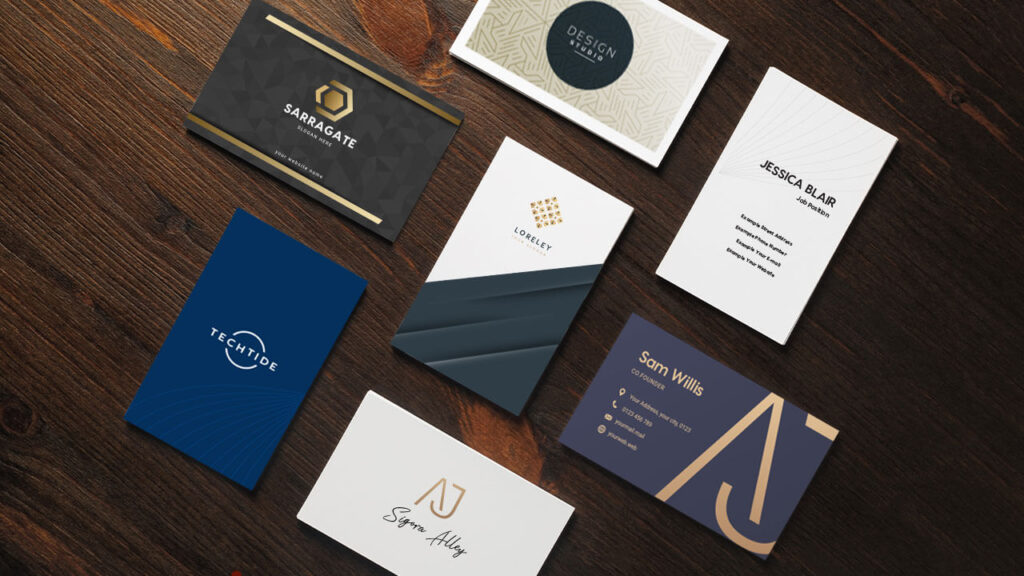In a digital-first world where connections are made with a tap or click, Business Cards remain one of the most personal and powerful tools for making a lasting impression. A well-designed business card doesn’t just share your contact details — it communicates your brand’s personality, professionalism, and values in a compact, tangible format.
Whether you’re an entrepreneur, creative designer, or business professional, understanding how to craft impactful Business Cards can set you apart from competitors and keep your brand top of mind long after the first meeting.
Why Business Cards Still Matter
Despite the rise of digital networking tools, Business Cards continue to play a crucial role in professional interactions. They create a tangible connection — something a LinkedIn invite or email signature simply can’t match.
Here’s why they’re still indispensable:
- Memorability: A creative design makes your brand unforgettable.
- Professionalism: Having a physical card shows preparedness and credibility.
- Networking Efficiency: Cards are easy to exchange during meetings, conferences, or events.
- Brand Identity: Your design reflects your brand’s essence — colors, typography, and style all contribute to the first impression.
Key Elements of an Effective Business Card Design
When it comes to crafting business cards that stand out, every detail matters. Here are the essential components you should focus on:
1. Clear Brand Identity
Your business card should be an extension of your brand. Include your logo, brand colors, and fonts that align with your company’s style guide. Consistency across your visual materials helps reinforce recognition and trust.
2. Simple Yet Impactful Layout
Avoid clutter. A good business card layout balances text and white space. Include only the most important details:
- Your full name
- Job title
- Company name
- Phone number
- Email address
- Website or social links
Remember — simplicity is sophistication.
3. Quality Material and Finish
The tactile feel of your card contributes to the impression it leaves. Choose premium paper stock, matte or glossy finishes, or textured cards for a professional touch. Even small upgrades, like rounded corners or raised lettering, can elevate the design.
4. Readability and Typography
Choose fonts that are legible and reflect your brand’s tone. For example, a modern tech startup may prefer sleek sans-serif fonts, while a law firm might choose elegant serif fonts.
5. Creative Touches
Small design elements can make a big difference. Try adding:
- A QR code linking to your website or portfolio
- Minimalist icons for social media handles
- Embossed or foil-stamped logos
The Psychology Behind Color and Design Choices
Colors evoke emotions — and your Business Cards should take advantage of that psychology.
- Blue conveys trust and professionalism.
- Red captures attention and energy.
- Green suggests growth and stability.
- Black and gold imply luxury and sophistication.
Think about what emotion you want to evoke when someone receives your card. Align that feeling with your brand message for maximum impact.
Common Mistakes to Avoid When Designing Business Cards
Even the best ideas can fall flat with poor execution. Watch out for these common mistakes:
- Overloading with information — too much text distracts from key details.
- Low-quality printing — blurry images or faded colors look unprofessional.
- Tiny fonts — if someone has to squint, they won’t keep your card.
- Ignoring contrast — make sure text is readable against your background color.
To achieve the perfect balance between creativity and clarity, opt for Professional Business Card Designs By Kwik Kopy — they know how to merge aesthetic appeal with practical functionality.
How to Stand Out With Custom Business Card Printing
In a world full of cookie-cutter designs, personalization is key. Custom Business Card Printing allows you to create something truly unique that reflects your brand identity.
Here’s how customization helps you shine:
- Personalized Finishes: Add foil stamping, embossing, or spot UV for a luxurious feel.
- Unique Shapes: Move beyond standard rectangles — try square, mini, or folded designs.
- Eco-Friendly Materials: Recycled paper or soy-based inks showcase your sustainability values.
- Dual Purpose Cards: Combine creativity and function — like a card that folds into a mini brochure.
With Custom Business Card Printing, you turn an ordinary introduction into an unforgettable experience.
Design Trends for Modern Business Cards
Staying updated with design trends can keep your cards looking fresh and relevant. Here are some popular trends to inspire your next batch:
- Minimalist layouts — clean lines, lots of white space.
- Bold typography — large, attention-grabbing fonts.
- Metallic and holographic finishes — add a futuristic edge.
- Textured surfaces — tactile designs leave a sensory memory.
- Interactive elements — NFC-enabled cards or QR codes for digital follow-ups.
These modern touches, combined with Professional Business Card Designs By Kwik Kopy, can help your cards stand out in any stack.
When to Update Your Business Cards
Outdated contact info or a rebrand calls for new cards. Consider redesigning when:
- You change your logo or brand colors.
- Your job title or contact details change.
- Your old cards no longer reflect your brand’s growth.
Treat your Business Cards like a branding asset — refresh them regularly to maintain a consistent and modern image.
Final Thoughts
Even in an era of smartphones and LinkedIn connections, Business Cards remain one of the most authentic ways to make a lasting impression. They’re not just pieces of paper — they’re miniature brand ambassadors that speak for your business long after the handshake ends.
By combining timeless design principles with Custom Business Card Printing, you can create a powerful tool that captures your professionalism, creativity, and brand essence.
So, if you want your first impression to truly stand out, explore Professional Business Card Designs By Kwik Kopy today — and let your next connection remember you for all the right reasons.
